| Type E | |
|---|---|
 | |
| Role | Reconnaissance aircraft |
| Manufacturer | AB Thulinverken |
| Designer | Enoch Thulin |
| First flight | 1916 |
| Primary user | Swedish Air Force |
| Number built | 5 |
The Thulin E was a Swedish reconnaissance aircraft built in the late 1910s.
| Type E | |
|---|---|
 | |
| Role | Reconnaissance aircraft |
| Manufacturer | AB Thulinverken |
| Designer | Enoch Thulin |
| First flight | 1916 |
| Primary user | Swedish Air Force |
| Number built | 5 |
The Thulin E was a Swedish reconnaissance aircraft built in the late 1910s.
The Thulin E was the first indigenous design conceived by Enoch Thulin's company. It was a two-seat biplane with the lower wings mounted at the bottom of the fuselage. The upper wing was supported by four wing struts and four V-shaped fuselage struts. Only the upper wings were fitted with ailerons. The fuselage was provided with two open cockpits, in tandem, under the upper wing. The rear landing gear was a fixed spur spring. An attempt was made to equip the biplane with floats.
Data from [1]
General characteristics
Performance
Related lists

The Aero A.23 was a Czechoslovakian airliner of the 1920s. Aero Vodochody had produced the first Czech airliner, the A.10, four of which had served with ČSA, the national airline. The A.23, another biplane, was bigger, more powerful and could carry more passengers.
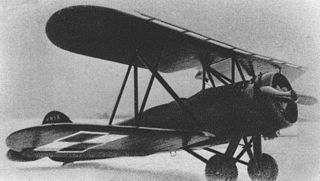
The PWS-6, was a Polish liaison aircraft, developed in 1930 by the PWS, that remained a prototype.
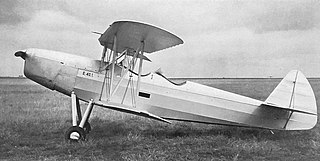
The Praga E-40 was a single engine, two seat, biplane basic trainer, built in Czechoslovakia in the mid-1930s.
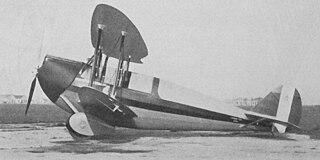
The Caproni Ca.125 was a single-engine, tandem two-seat, touring biplane built in Italy in 1933. It could be operated either as a landplane or seaplane.

The FVM Ö 1 Tummelisa is a single seat, single engine Swedish biplane from the 1920s. It was operated by the Swedish Air Force as its advanced trainer until the mid-1930s.
The Corcoran 65-1 was a motor glider of very unusual configuration, a twin engine biplane. It was designed and built in the United States in the 1960s; only two were completed.
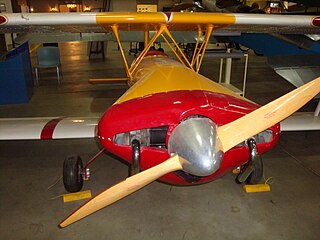
The Der Kricket DK-1 is a single seat, single engine biplane designed and built in the United States in the 1970s with an emphasis on simplicity. Several were built, as intended, by amateurs from plans in addition to some constructed by the four man design consortium.

The Spijker V.2, sometimes anglicized to Spyker V.2 or Spyker-Trompenburg V.2, was a low powered, tandem seat biplane designed and built for the Dutch government for pilot training towards the end of World War I. More than seventy were built.

The Spijker, Spyker V.1 or Spyker-Trompenburg V.1, was a single seat biplane fighter built in the Netherlands during World War I. It was underpowered and did not go into production.
The Aviator Shershen' is a Russian two seat biplane, sold in kit form. It first flew in 2005 and several variants have been produced, with a choice of engines.
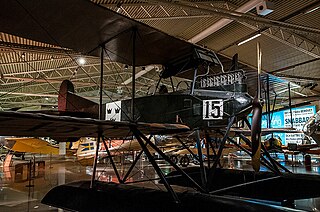
The Thulin G was a Swedish military reconnaissance aircraft built in the late 1910s.
The Caudron C.220 was a two-seat French biplane trainer. Only two were built, using different engines.

The de Marçay 2 C1 was a single seat biplane fighter designed in France and first flown in 1919. It did not go into production.

The Heinkel HD 20 was a twin engine, three seat German biplane built in 1926 for civil survey work.
The Gabriel P 6 was a Polish training aircraft and the P 7 a tourer. The difference between them was the wing configuration, chosen to optimise their speed range for their role, so the P 6 was a biplane and the P 7 a parasol wing aircraft.
The Caproni Ca.66 and Caproni Ca.67 were Italian night bomber aircraft designed to re-equip the post-World War I Regia Aeronautica.
The Caspar CJ 14 was a German fighter aircraft prototype built in the 1920s.

The Thulin FA was a Swedish reconnaissance aircraft built in the late 1910s.

The 1929 Curtiss Model 53 Condor, also known as the Curtiss Model 53 Condor 18 or the Curtiss CO Condor, was a civil passenger version of the Model 52 Condor bomber. A twin-engined biplane, it carried 18 passengers.

The Wiley Post Model A is a U.S. two seat sports biplane, built in small numbers in the 1930s.